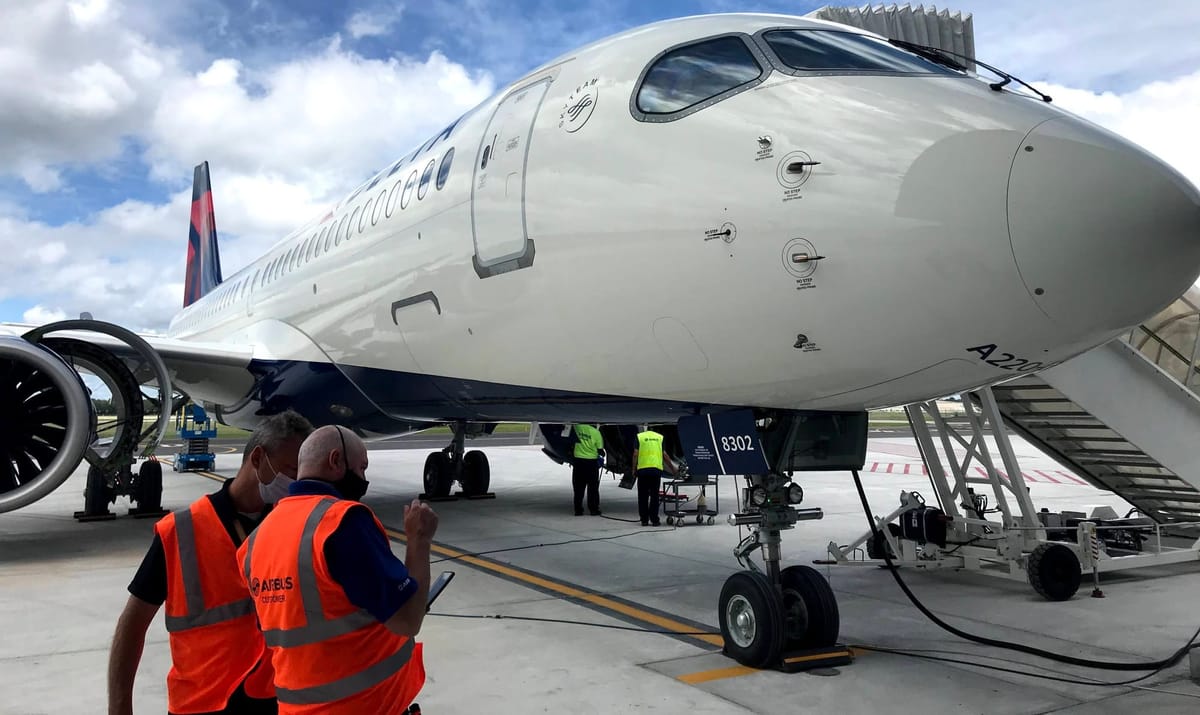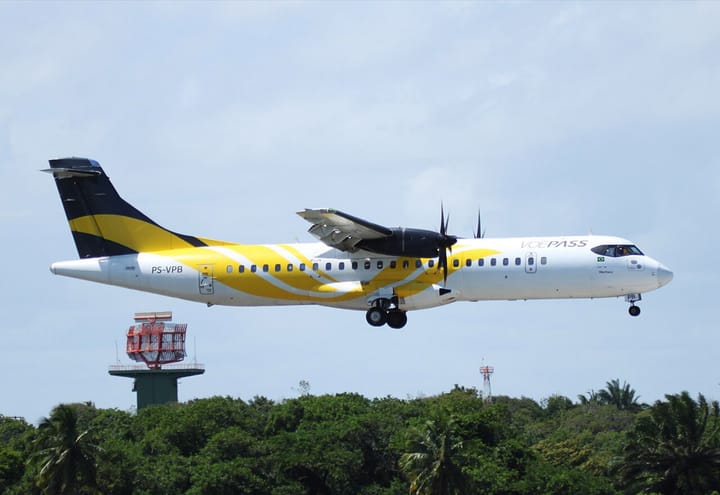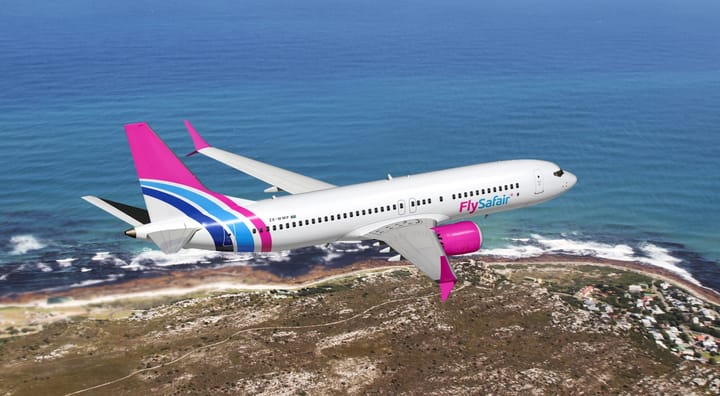The Airbus A220 has seen great success in its first few years of service, and it seems to be picking up momentum in the post COVID era. We take a look at how this brilliant narrow-body is proving to be best in its class.
Bombardier Aerospace has a rich history in aviation that goes back to 1989 when the company bought out the legendary Canadair and restored it to profitability. The manufacturer has designed many best in class aircraft, including the venerable Dash 8, the CRJ line of regional jets and the popular Global Express line of long range business jets. If the company was known for its elegant design philosophy, that DNA surely carried across into the Bombardier C Series narrow-body line, or as it’s known today, the Airbus A220.
The Bombardier C Series program was launched in 2008 after a turbulent design and feasibility phase that started in 2005. Development had been paused for a year after the airframer had difficulty finding a suitable engine partner, first seeking partner bids from International Aero Engines (IAE) and CFM International before finally settling on the new Pratt & Whitney PW1500G gear turbofan engine. When the aircraft was rolled out in 2013 however, it was clear that Bombardier had delivered an exceptionally elegant design that ticked all the necessary boxes. The PW1500G geared turbofan engine claimed to deliver up to 16% better levels of fuel efficiency compared to the previous generation of engines, that when combined with the aircraft’s advanced aerodynamic design meant that they had created a winner in terms of fuel efficiency.
The aircraft also came with a highly optimised cockpit featuring the Rockwell Collins Pro Line Fusion avionics suite spread across 5 multifunctional displays with optional Heads Up Displays, as well as fly-by-wire flight controls. The five-abreast cabin came equipped with largest-in-class overhead stowage bins and 2 modular areas that could be customised for each airline’s needs.

Bombardier were entering a market that already had strong competition from Airbus in the form of the A319, the Embraer E-Jet line which at the time consisted of the E-170, -175, -190 and -195, as well as shorter versions of Boeing's 737 family. Bombardier had experience in similar markets with the CRJ line, but they were about to take a clean sheet design to a fiercy competitive market that was on the precipice of a modernization phase that would open up a host of potential orders from airlines aroud the world.
The name of the game now was efficiency, and as the global economic environment placed ever increasing strain on the air transport industry, airlines were looking to manufacturers to come up with designs that were going to push the envelopes of both efficiency and environmental friendliness, and the C Series had brought just that. As is usually the case however, having a winning design did not necessarily translate into strong sales, and Bombardier was about to discover the complexities of going up against larger manufactures with strong governmental backing.
While the company had created an exceptional aircraft, it lacked the sheer reach in sales potential that the big 2 (Airbus and Boeing) had at their disposal, which was usually helped along by strong political influence. A perfect example of this was when United Airlines had placed an order for 40 Boeing 737-700s, which Bombardier had competed with the C Series. Boeing reportedly offered the 737-700's at a 75% discounted price to win the order, which made it virtually impossible for the Canadian manufacturer to compete with the bid.
Later that same year, the C Series managed to win an order from Delta Airlines for 75 CS100's, but at a cost $13.6 million per aircraft lower than its posted cost of $33.2 million. In a somewhat hypocritical move, Boeing filed a petition against the sale that eventually led the Trump administration's US Department of Commerce (DoC) to slap Bombardier with a 292% duty on the order, which ultimately forced Bombardier to relinquish a 50% stake in the C Series program to Airbus, who later aquired an additional 25% after mounting financial pressure forced Bombardier to exit the commercial aircraft sector.
The Airbus A220
The Bombardier C Series was officially redesignated as the Airbus A220 in July of 2018 as part of the takeover agreement. The fact that Airbus took ownership of the program meant that doors were opening for the sales potential of the aircraft. With Airbus driving, the future potential sales of the A220 could end up doubling over the life time of the program compared to bombardier's initial sales projections.

As part of Airbus's takeover an agreement had been reached to open a second production facility in the U.S, which helped Bombardier to circumvent the 292% tarrif initially imposed by the U.S DoC. The production facility opened in 2019 and Airbus narrow-body final assembly continues to forge ahead to this day.
Direct competition from Embraer
While the A220 capitalized on the Airbus partnership, the direct competition posed by Embraer with it's E-Jet E2 range became a significant factor. Both aircraft are powered by the same engine, however the A220 offers both greater range and slightly better fuel economy compared to the E2, but doesn't have the same cargo capacity offered by the Brazlilian type. The two aircraft are very evenly matched as far as performance goes, and commercial success was going to come down to strategic partnerships.
In 2017 Embraer claimed in media statements that Brazil would sue Canada for its subsidies to Bombardier through the World Trade Organization. In December of the same year, it became known that Boeing would put a lucrative deal on the table for Embraer to form its own strategic partnership to compete with the Bombardier-Airbus relationship. The deal however fell through after Boeing terminated it as a result of the COVID-19 pandemic, which would arguably go on to stunt the sales potential of the E-2 family, which today is evidenced by the market share dominance enjoyed by Airbus' A220. By the end of 2023 Airbus had recorded 914 orders, 316 deliveries and 598 aircraft on backlog for the A220, whereas Embraer had 316 orders, 94 deliveries and 212 aircraft on backlog. Production time lines have been impacted by supply chain issues at Pratt & Whitney, affecting both manufacturers. In the operational arena the A220 and Embraer E-2 have both seen dispatch reliability figures close to 99%, which came as somewhat of a surpise for a clean-sheet design.
The A220 is currently in service with 19 airlines, with its primary users being Delta Airlines, Swiss Airlines, Air baltic, Air Canada and Air France. Only time will tell if the A220 can continue to capitalize on the sequence of events that has led it to this point in the aircraft's history, while Embraer will be left to ponder the future of the E-2 if it can't produce more sales of the type in the near future.
Sources:
https://www.airbus.com/sites/g/files/jlcbta136/files/2024-01/EN-Airbus-A220-Facts-and-Figures-January-2024.pdf
https://skyteamvirtual.org/fleet/models/delta-air-lines-airbus-a220-100
https://staralliancevirtual.org/fleet/models/helvetic-airways-e190-e2-erj-190-300-std
Main image credit: Delta Airlines
Article images: Airbus
Liked this post? Buy me a coffee and keep the journal going.






